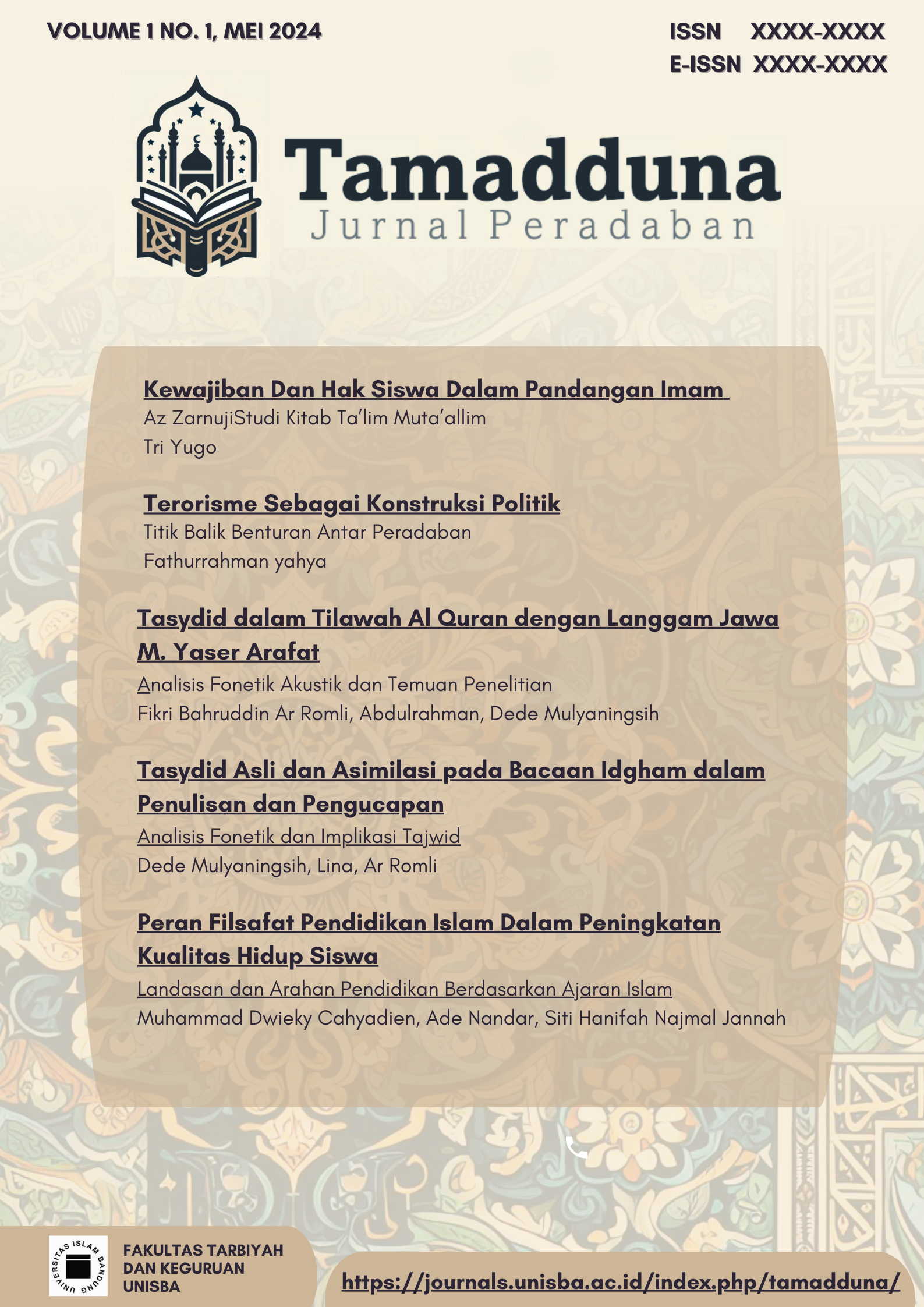Original Tasydid and Assimilation in Idgham Recitation: Writing and Pronunciation
Phonetic Analysis and Tajwid Implications
DOI:
https://doi.org/10.29313/tamadduna.v1i1.4030Keywords:
Tasydid, Tajwid, Phonetic Analysis, Idgham, Qur'an RecitationAbstract
This paper is a case study on the science of Tajwid in the Qur'an, investigating the patterns of tasydid recitation as a phonetic topic within the field of phonology. This study describes two types of tasydid: those written in the mushaf and applied in recitation, and those resulting from word assimilation, referring to Tajwid rules using a qualitative-descriptive approach. Data was taken from several recitation samples in the Qur'an, specifically from Surah As-Shams containing tasydid, and classified according to these two categories. Through this research, it is hoped that there will be a consistency between the recitation and the writing of each tasydid category, namely original tasydid and hukmi tasydid. Factors influencing the duration of tasydid include differences in phonetic systems, recitation style choices, and Tajwid rule preferences. Given the importance of phonology in learning the Arabic language and the urgency of tahsin and tajwid education at all educational levels, this study examines the phonetic aspects of tasydid pronunciation. Based on the analysis of the recitations of Surah Al-Isra verse 1 and Surah An-Najm verses 1-15 by qari M. Yasser Arafat, 14 tasydid entries were found, consisting of 7 original tasydid and 7 tasydid from the Idgham assimilation process. This research is expected to be beneficial for teachers and students in the process of learning Qur'anic recitation or qira'ah competence as well as Tajwid knowledge in the wider community.
References
Gunarti, T.T. “Fonologi Al-Qur’an Pada Surah Asy-Syamsy Analisis Keserasian Bunyi Pada Sajak Dan Efek Yang Ditimbulkannya” (2020).
Herdiansyah, Haris. Metode Penelitian Kualitatif Untuk Ilmu-Ilmu Sosial. Jakarta: Salemba Humanika, 2010.
Irawan, Yusuf. Fonetik Akustik: Sebuah Pengantar Telaah Wujud Akustik Bahasa. Bandung: Angkasa, 2017.
Lubis, Muhammad Irsyad. Pelajaran Tajwid. Medan: Sumber Ilmu Jaya, 1950.
Mahfan. Pelajaran Tajwid Praktis. Jakarta: Sandoro Jaya, 2000.
Mukhtar. Metode Penelitian Deskriptif Kualitatif. Jakarta: GP Press Group, 2013.
Octaviyanti, Sri. “Durasi Asimilasi Vokal Tanwin Dalam Pembacaan Al- Qur’an Surah Al- Isra’ Oleh Qa Ri’ Internasonal” 6, no. 1 (2023): 63–73.











